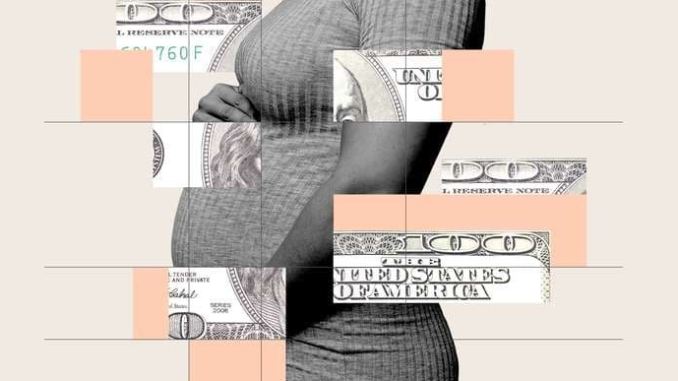
Christi Orsatti, 32, and her husband both grew up in big families with a stay-at-home parent.
Debt, in particular, was a major stressor for the moms BI spoke with, followed closely by the still-rising cost of everyday essentials. Because of these factors, they all said that having a second child was looking economically dicey. As seen in the chart below, Gallup research found that many Americans said the ideal number of kids is more than they currently have; a plurality of people with zero to two kids said two is the ideal number.
“We were hesitant to even try to have a baby, just knowing how expensive childcare is,” Orsatti said. “Obviously, now that we have our daughter, we have just more of a responsibility to make sure that everything is okay.”
Can’t afford to feed a second child
The moms BI spoke to talked about how much things have changed since they were kids.
While having a larger family may have been more affordable and feasible for their parents’ generation and before, it’s increasingly out of reach for the newest wave of parents. Business Insider estimated that parents could spend around $26,000 raising a young child in 2024, with childcare, transportation, and food clocking in as the biggest costs.
{snip}
“I don’t think people really understand how expensive it is to be raising a family and just trying to make it day to day,” Orsatti said. Car trouble, for example, would be a big deal for them right now — much less a second day care payment.
As seen in the chart below, costs of child-related essentials — things like transportation and formula — have increased over the last few years.
Leigh, a public interest attorney in the tri-state area, said she is “a very skilled shopper.” She added: “One of the greatest gifts I was given by my parents was being very discerning about expenses and learning how to grocery shop, buying stuff on sale, looking at unit prices.” She’s cut certain things out of her budget in recent years due to rising prices.
{snip}
Orsatti, who’s still breastfeeding, said she’s also trying to get the correct nutrition in without spending too much on groceries.
“We haven’t bought eggs for a week or two. I think we’re going to hold off for another week and just we’re trying to get creative and think of other things that we can eat to save money,” she said.
Lane, a 35-year-old librarian in the Midwest whose last name is withheld due to medically sensitive information, is dealing with medical debt and newborn necessities like a crib and formula — and is also worried about the cost of living.
“Dealing with all of those costs of just existing on top of the costs of existing with previous medical conditions, it takes a chunk of change,” Lane said.
{snip}
“Unfortunately, as essential as I thought a second child was to my future and my family,” Leigh said, “it’s not even on the table right now.”
The big question: Can I pay for debt and day care?
Orsatti has been paying off her student loans for nearly eight years but has only chipped away at $250 of the principal. She said she owes around $36,000.
“I am on the public service loan forgiveness plan, which I am hoping doesn’t get just ripped away from me,” she said. “I have about two years left to pay on it.”
Leigh, the public interest attorney in the tri-state area, has also been working toward public student loan forgiveness. Under the Biden administration’s SAVE plan, her monthly payment dropped to $250 — down from an estimated $900 under the alternative income-driven repayment plan. She said she’s put about $50,000 toward her loans. Though they were initially around $200,000, they’ve ballooned to about $315,000 with interest. Still, with lower monthly payments on the SAVE plan, she’s been able to budget and afford her mortgage and childcare bills.
{snip}
The SAVE plan is a Biden-era program that was intended to give debtors lower monthly payments and a shorter timeline for loan forgiveness. It’s currently paused by a federal court, and some borrowers told Business Insider’s Ayelet Sheffey that they’re worried about the program’s fate and other potential relief options during the Trump administration.
Student loans aren’t the only type of debt weighing down some moms. Lane, the librarian in the Midwest, is dealing with student loans and a mortgage — but she’s also paying down the medical debt she incurred from treating complications with her first birth. Her child spent time in the NICU, and insurance has been a continual struggle.
“It’s hard for us to be like, ‘let’s have another baby’ when, two years out, I’m still paying off just literally the act of having one baby,” she said. Having a second child may just not be within reach for them, she said, and that’s for a dual-income, “solidly middle-class” household.
{snip}
“My mother looked at the bills when I started getting them, and quietly told me that her entire experience having me as a baby was about $250 for everything,” Lane said, adding that included prenatal appointments, a C-section, and a hospital stay, according to her mom. “In 30-odd years we’ve gone from $250 to $12,000.”
* Original Article:
https://www.businessinsider.com/millennials-kids-birth-rates-rising-costs-student-loan-debt-2025-3